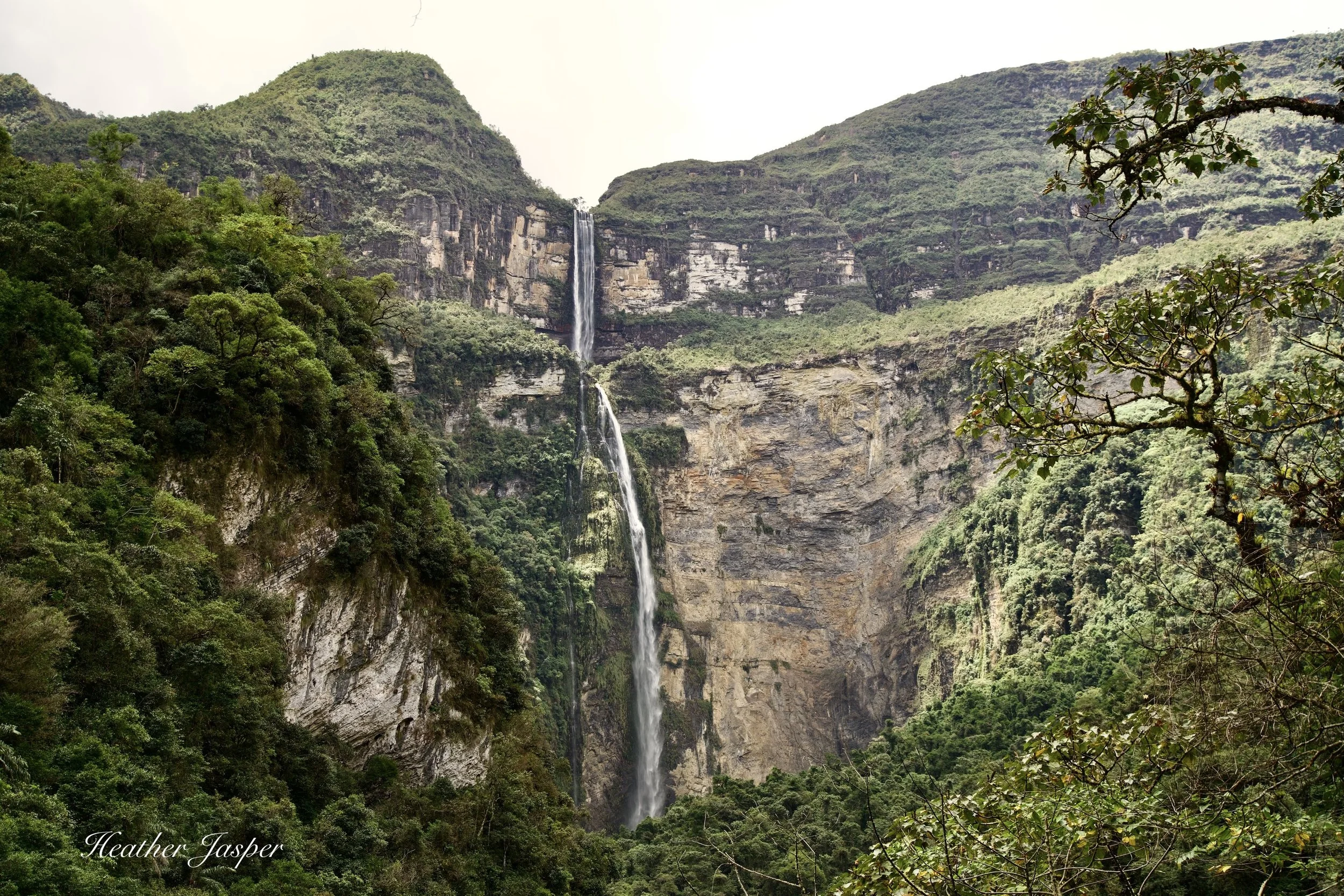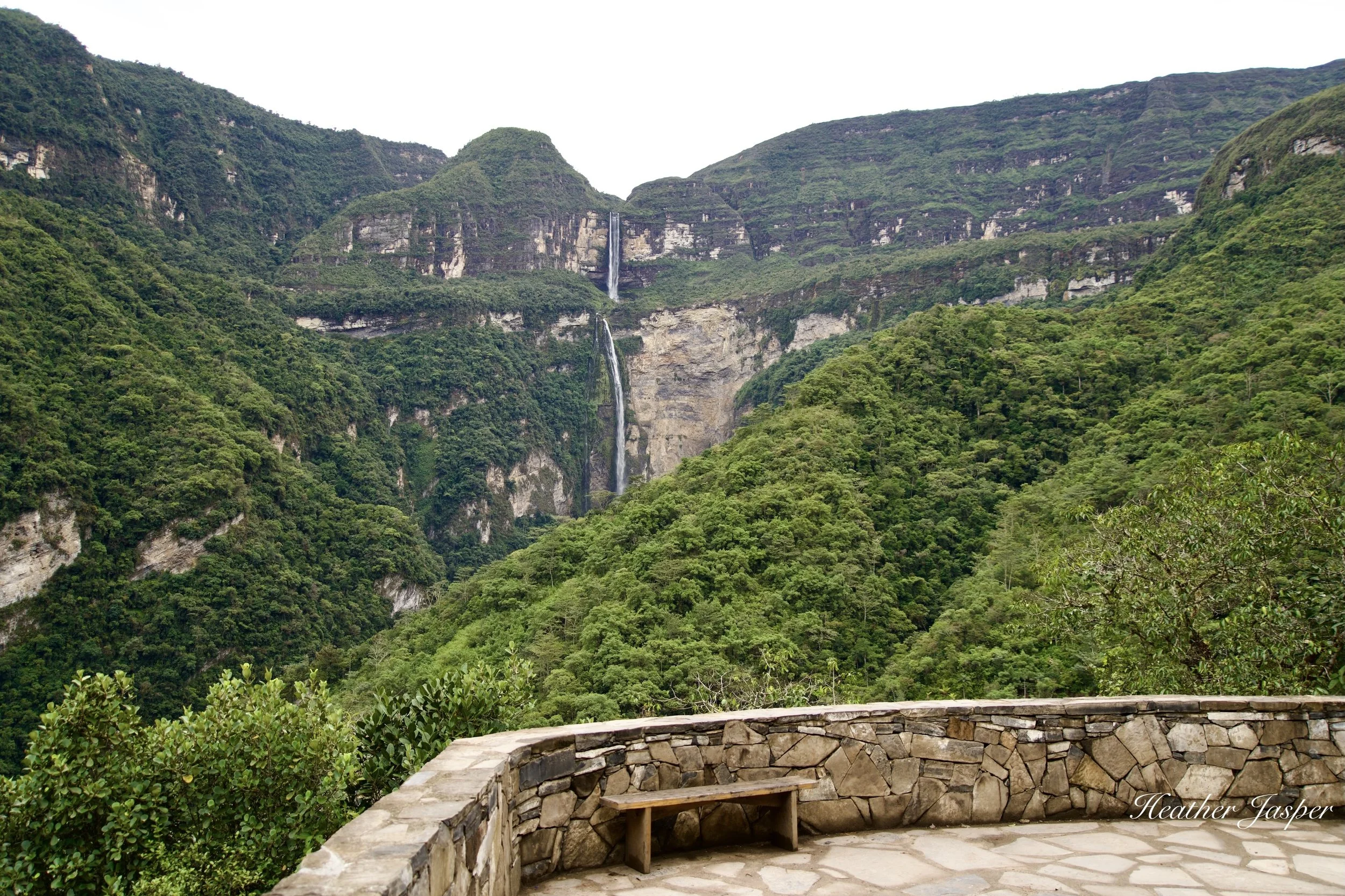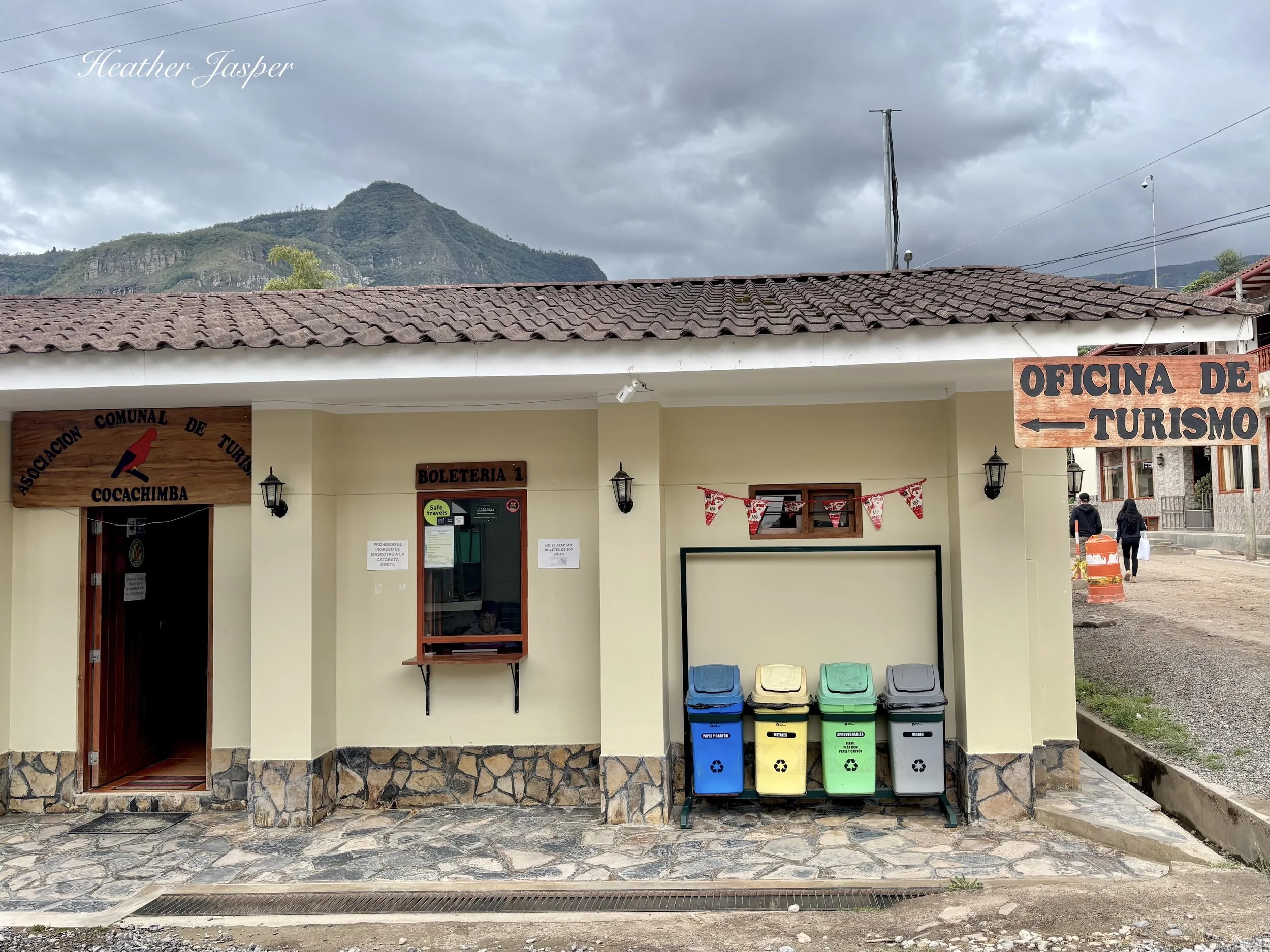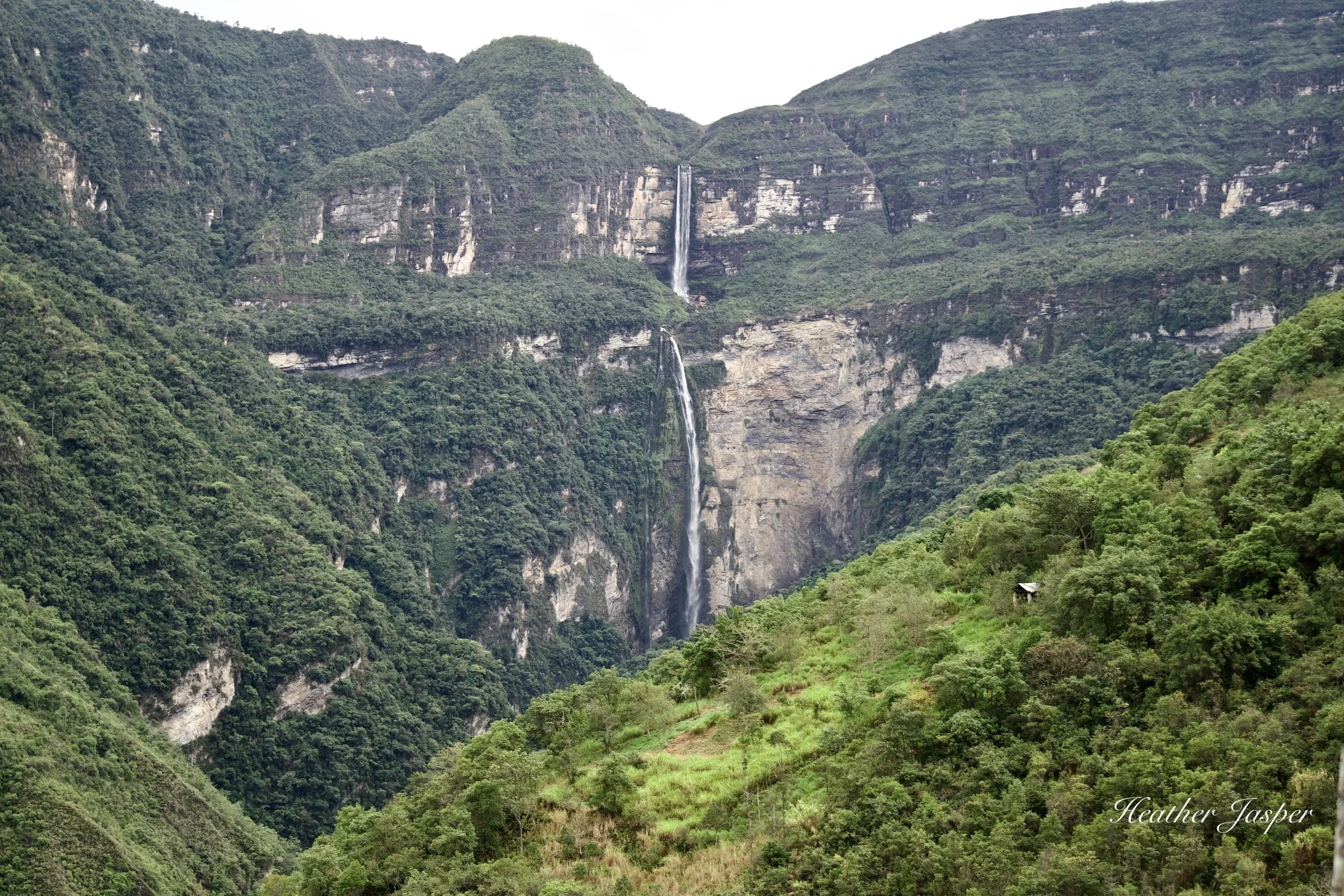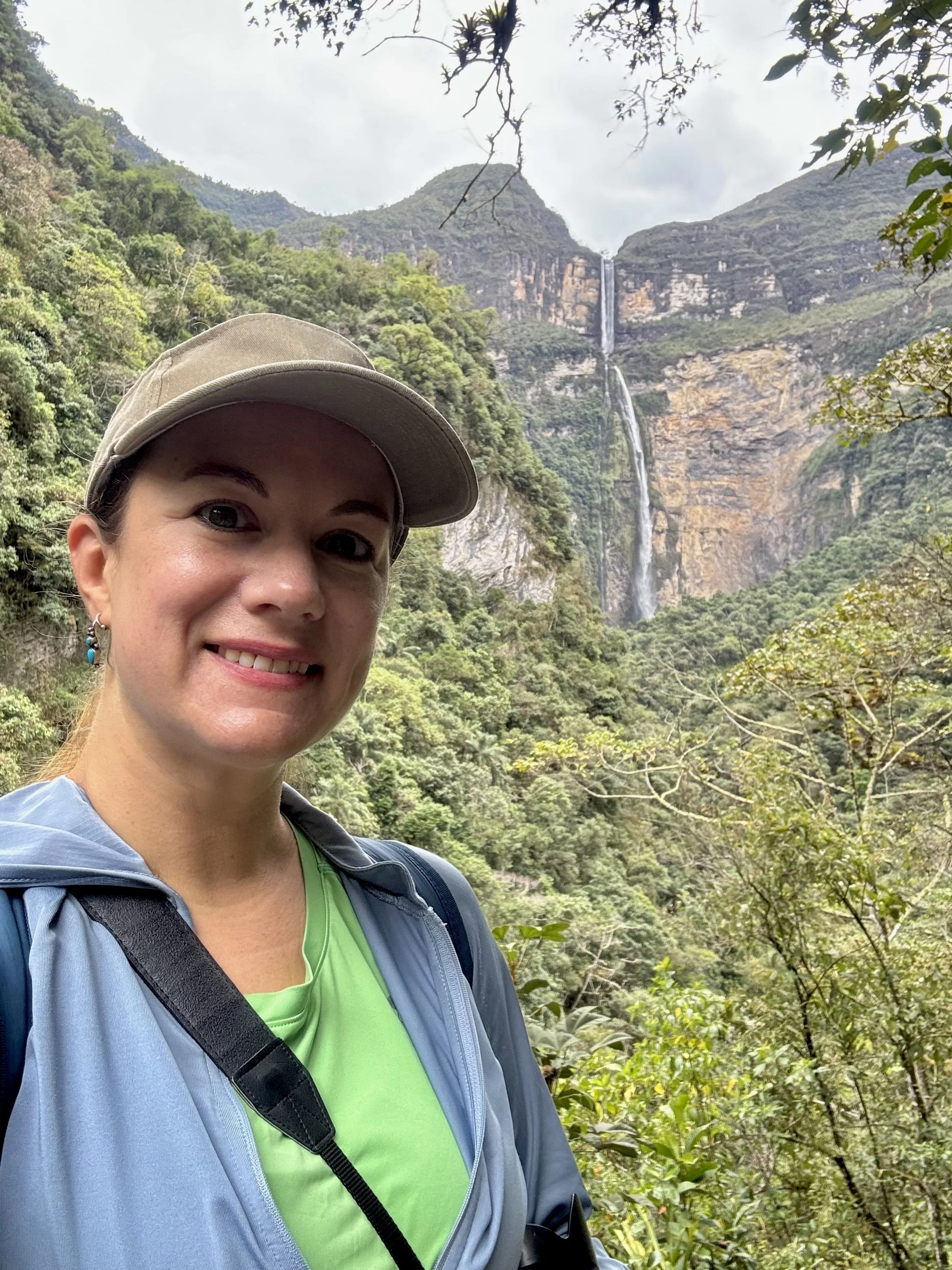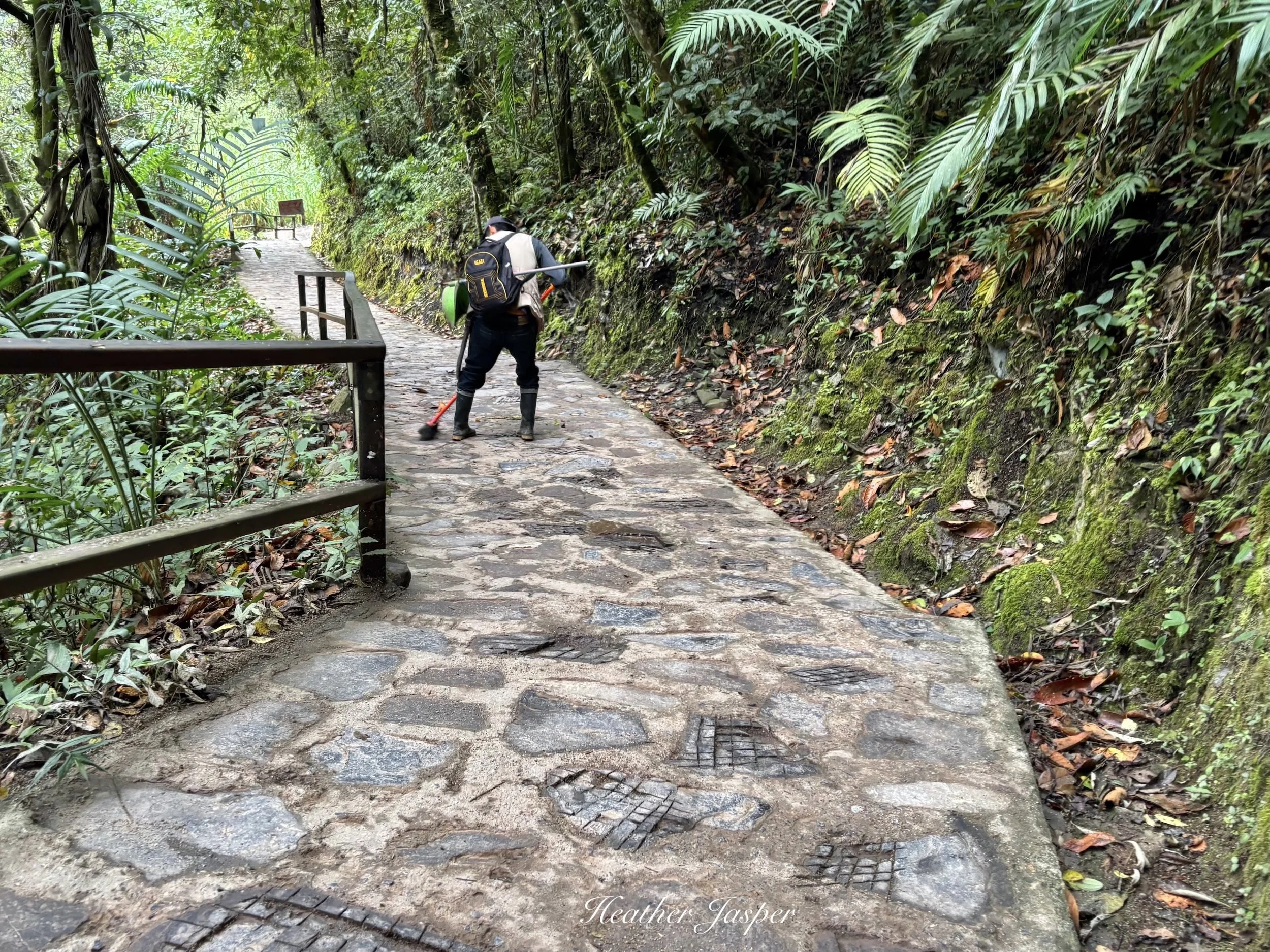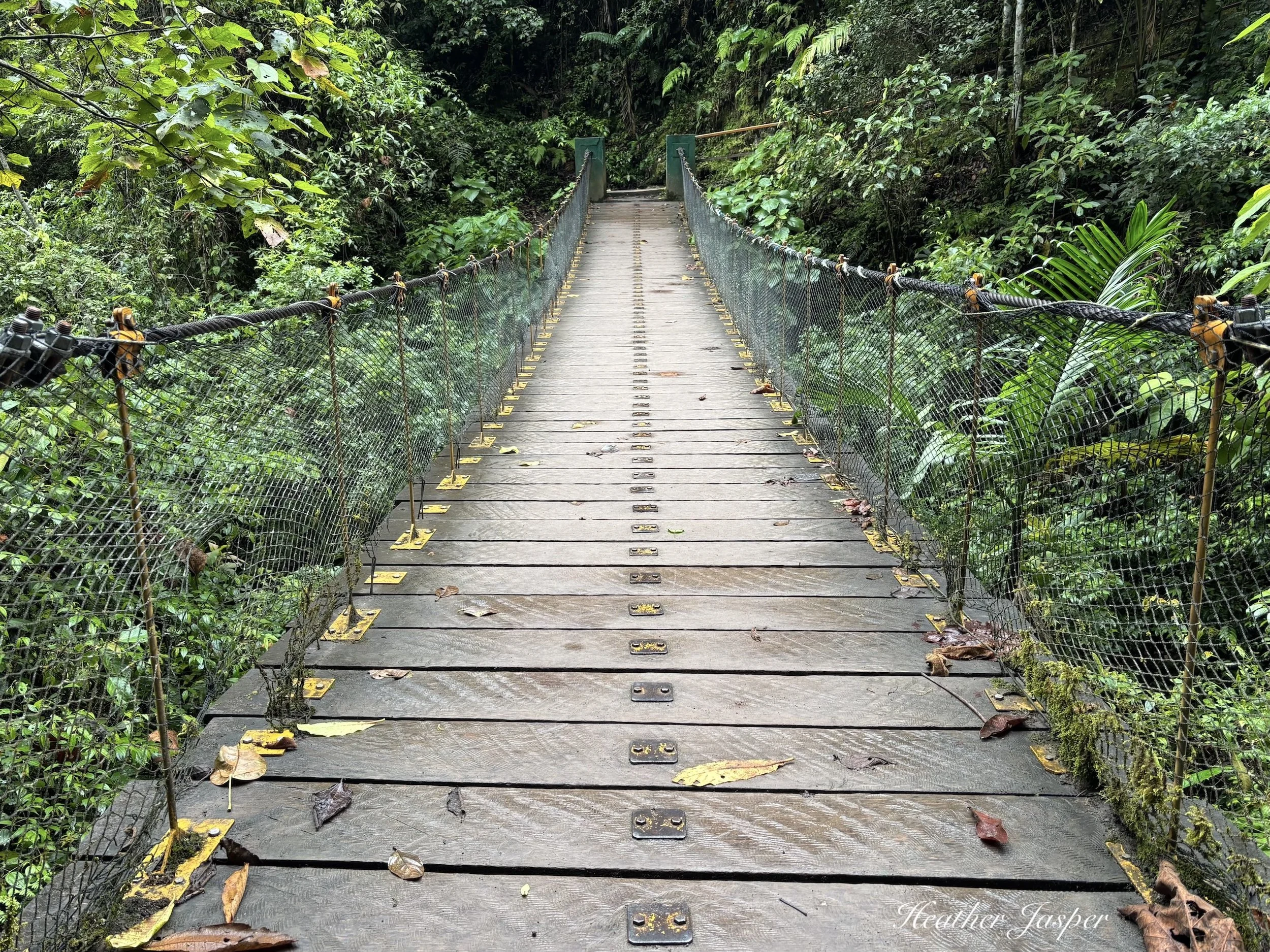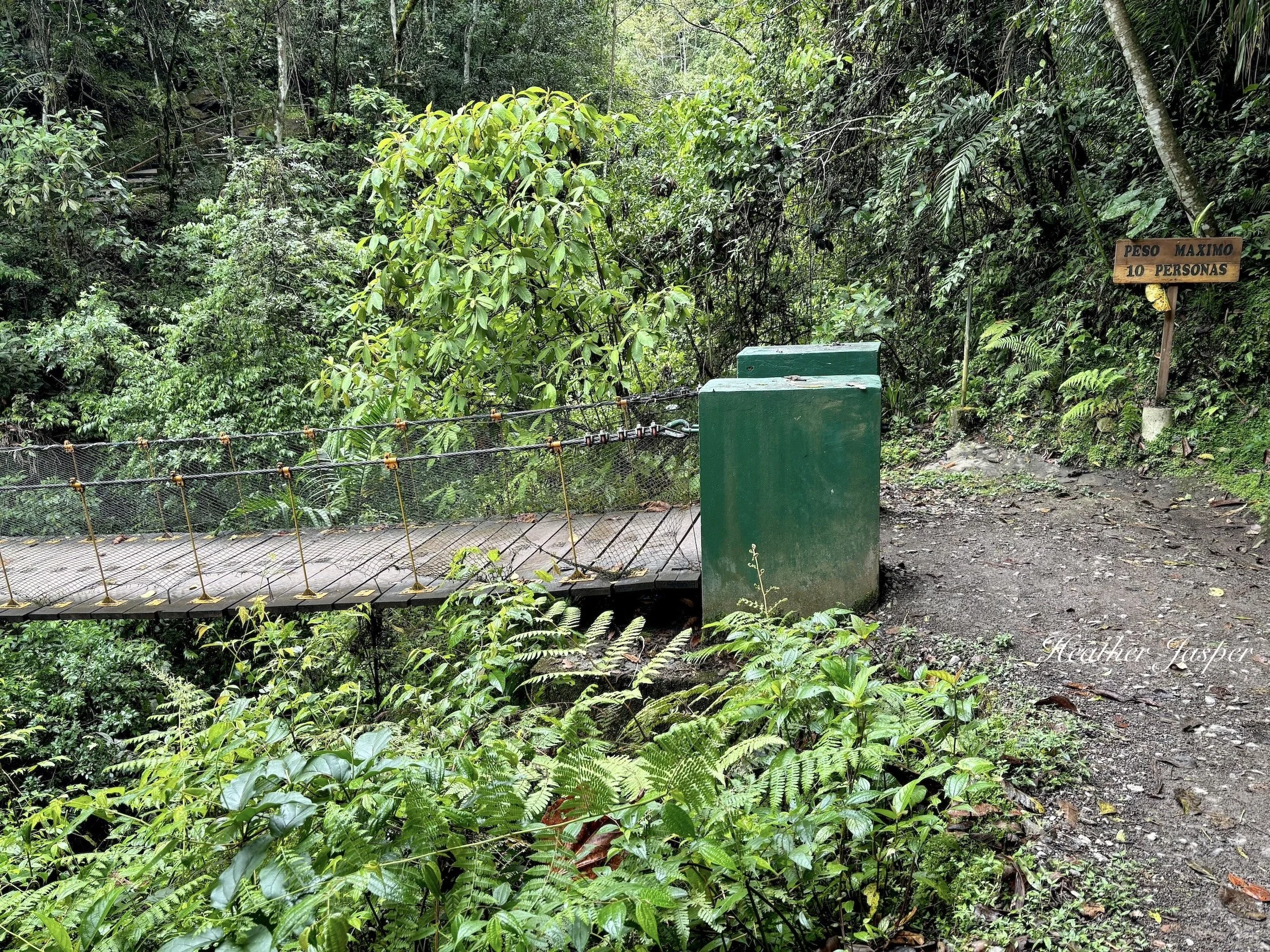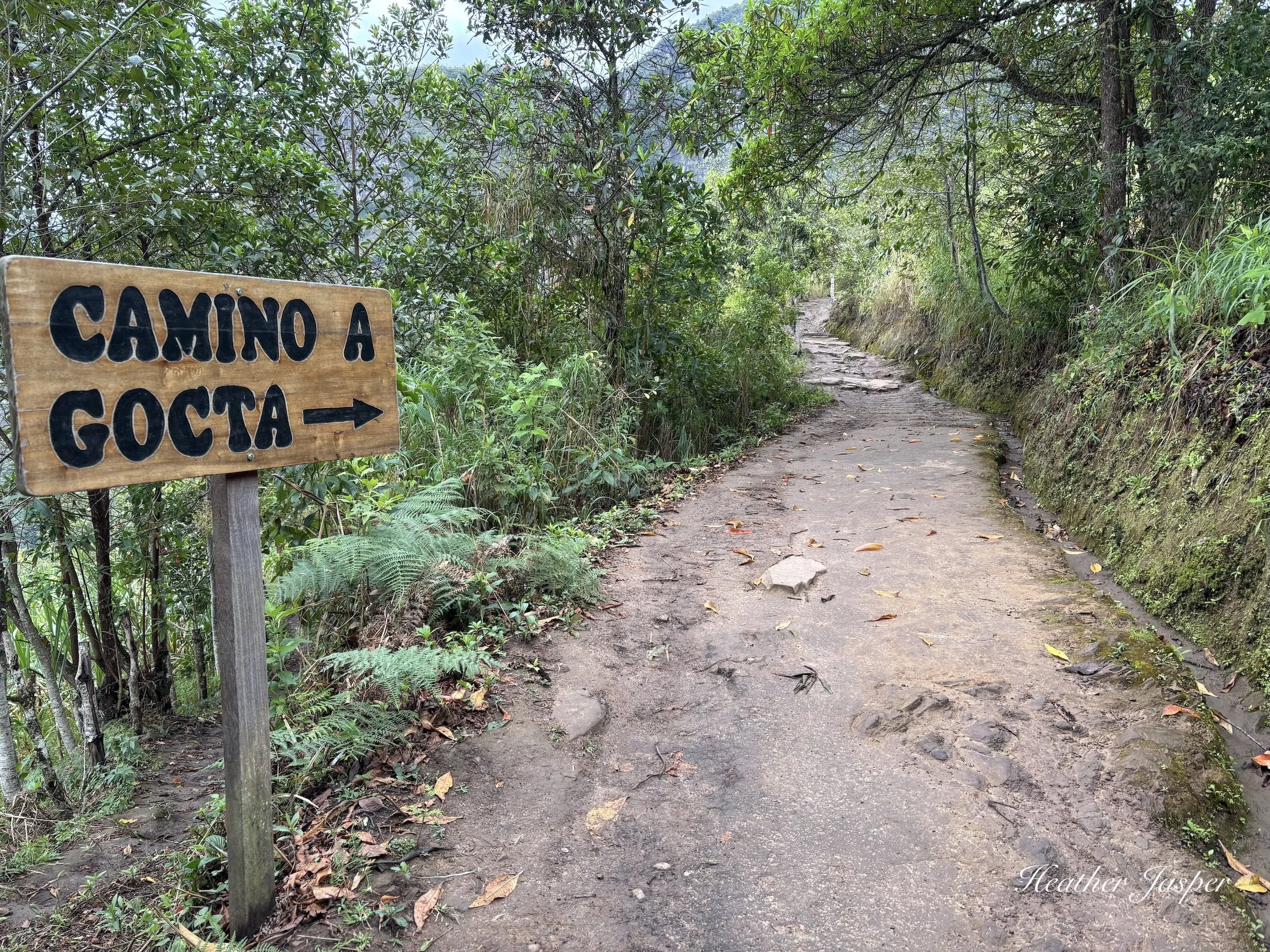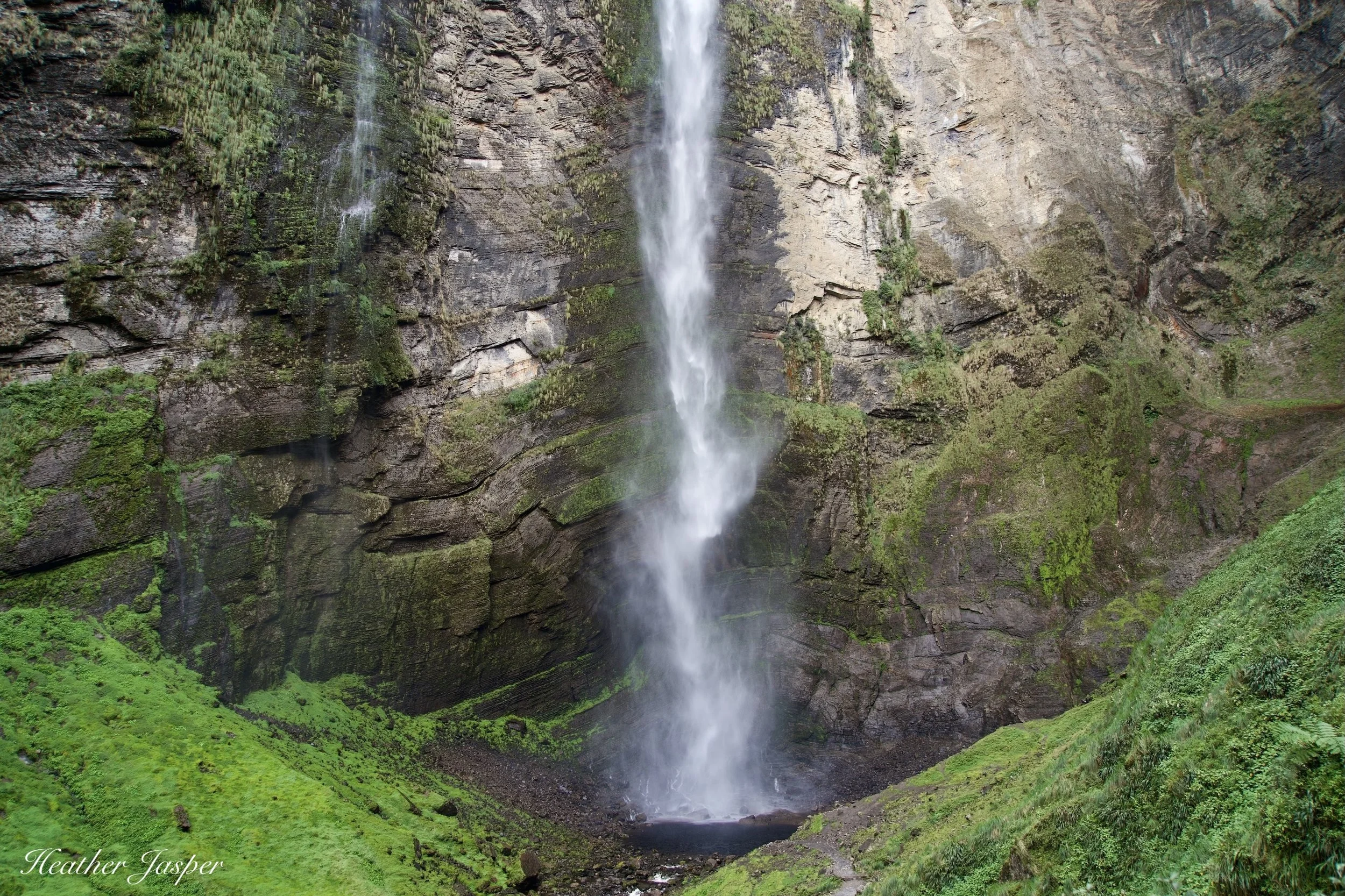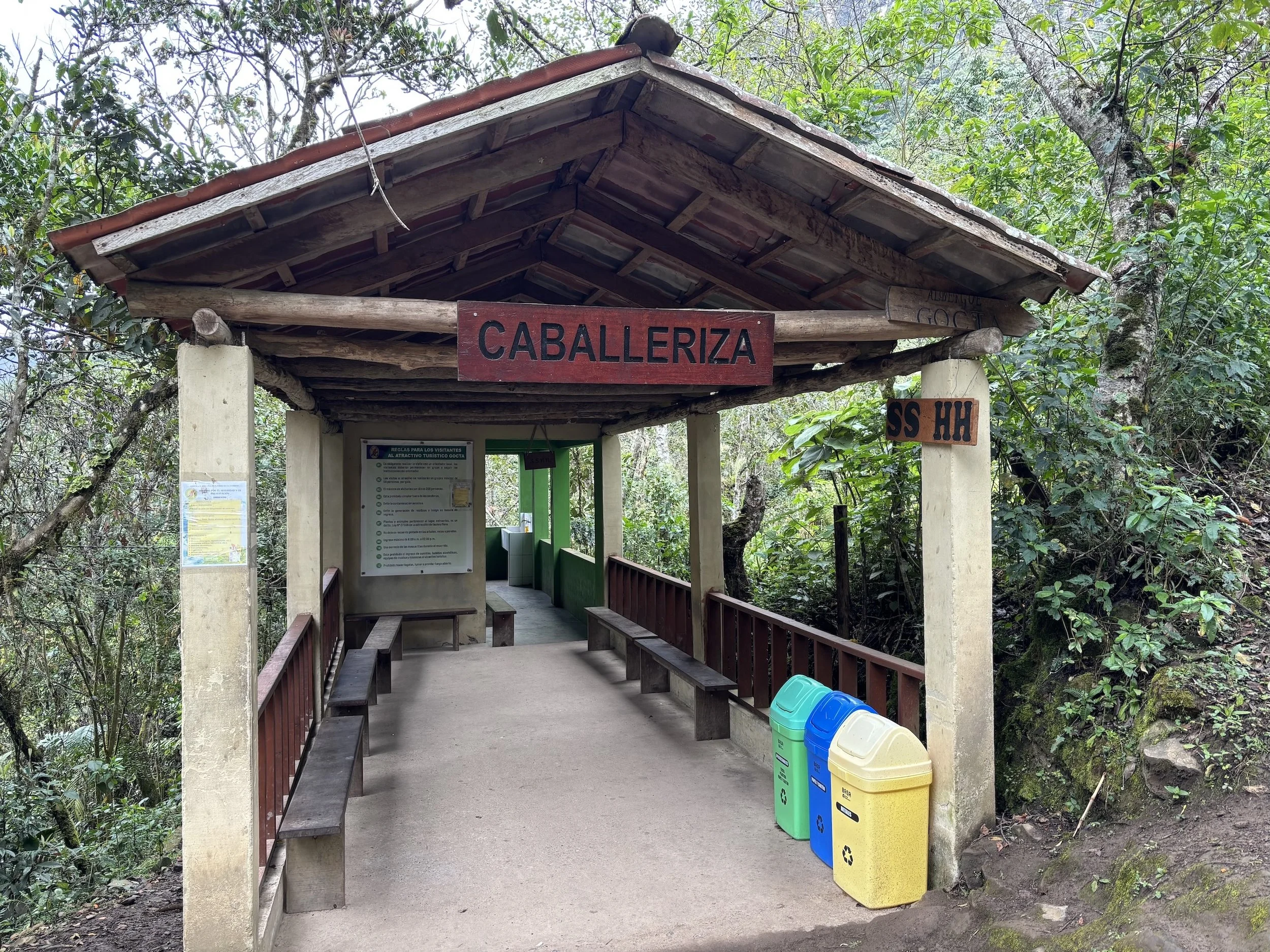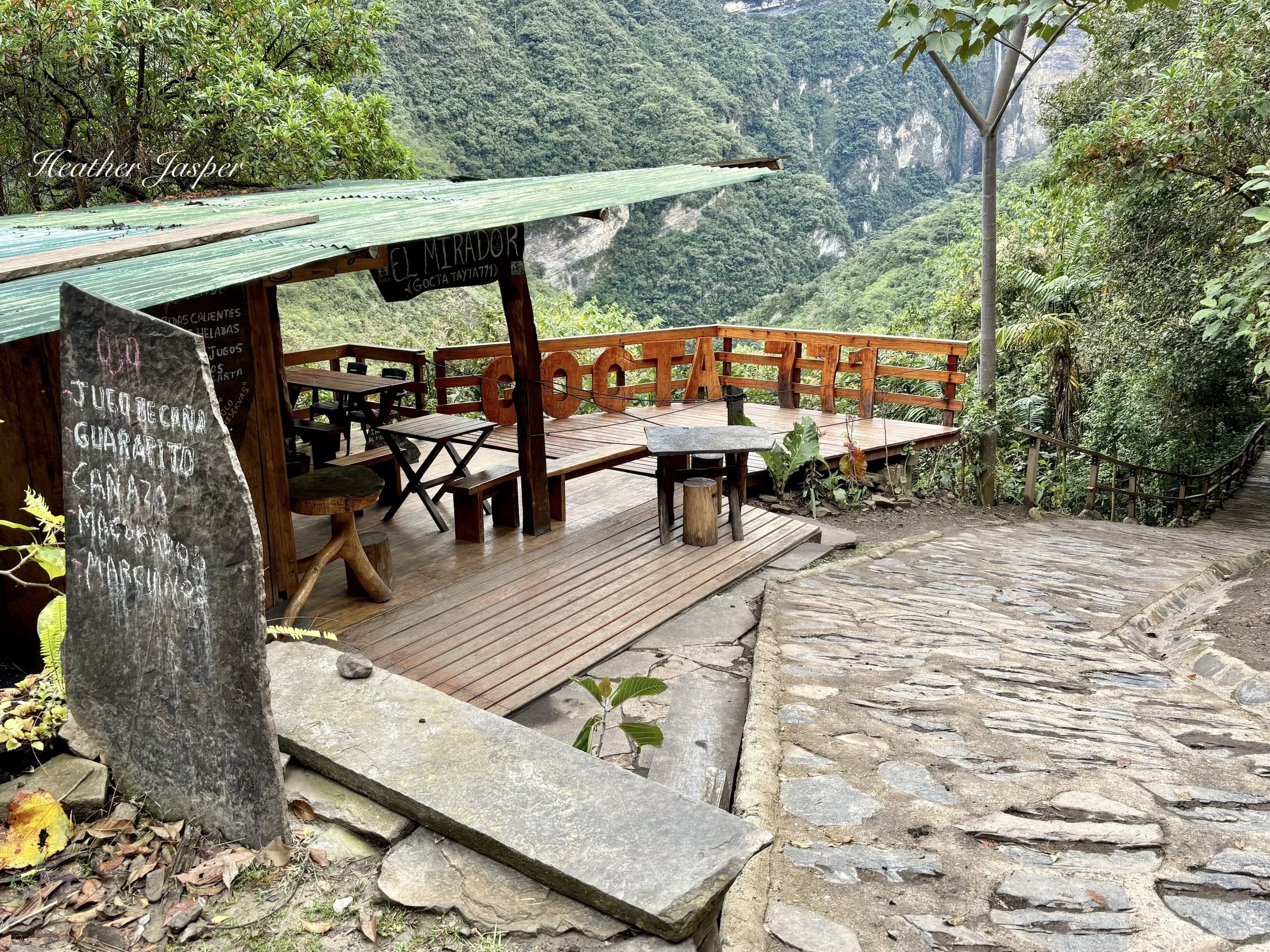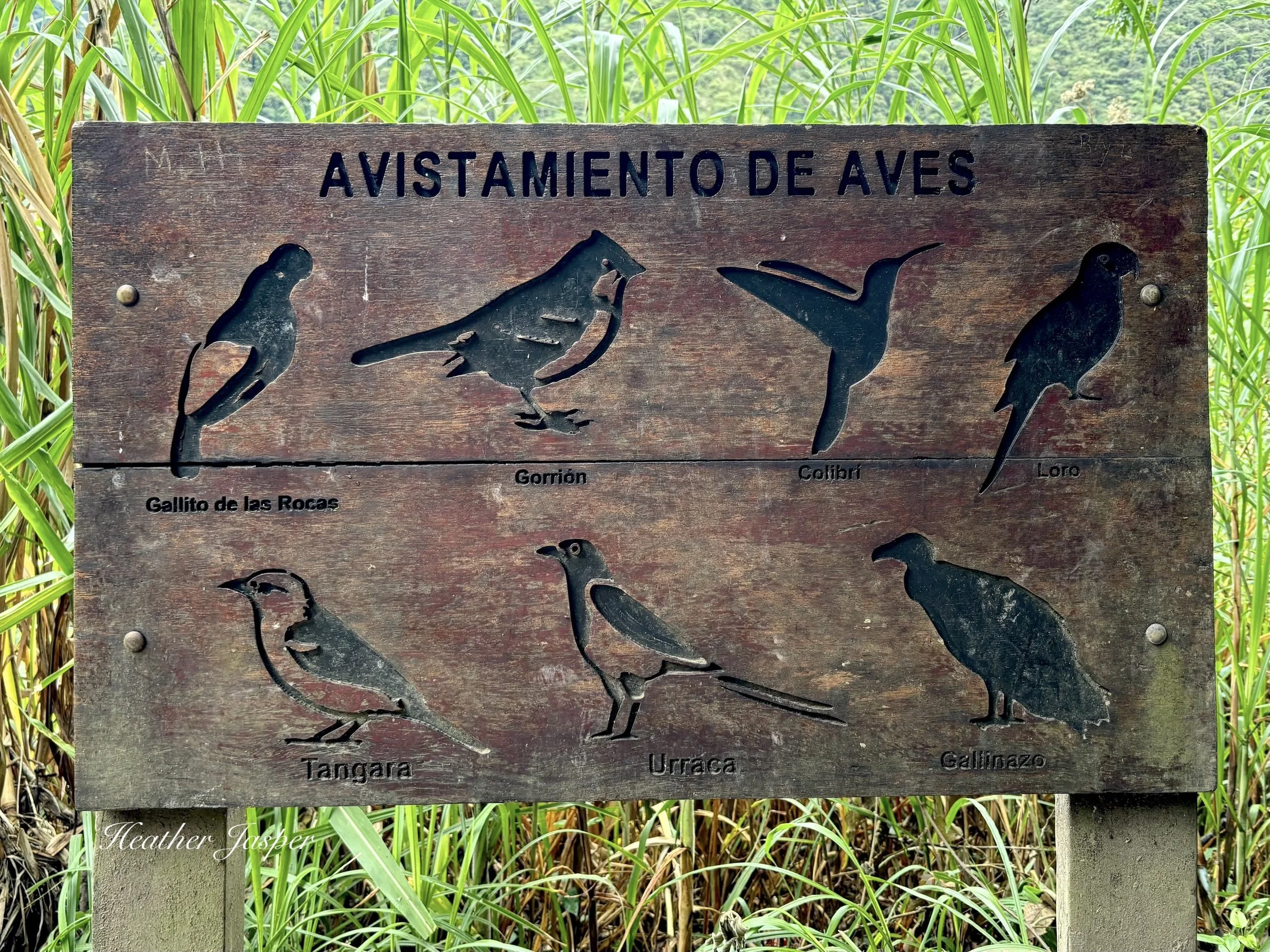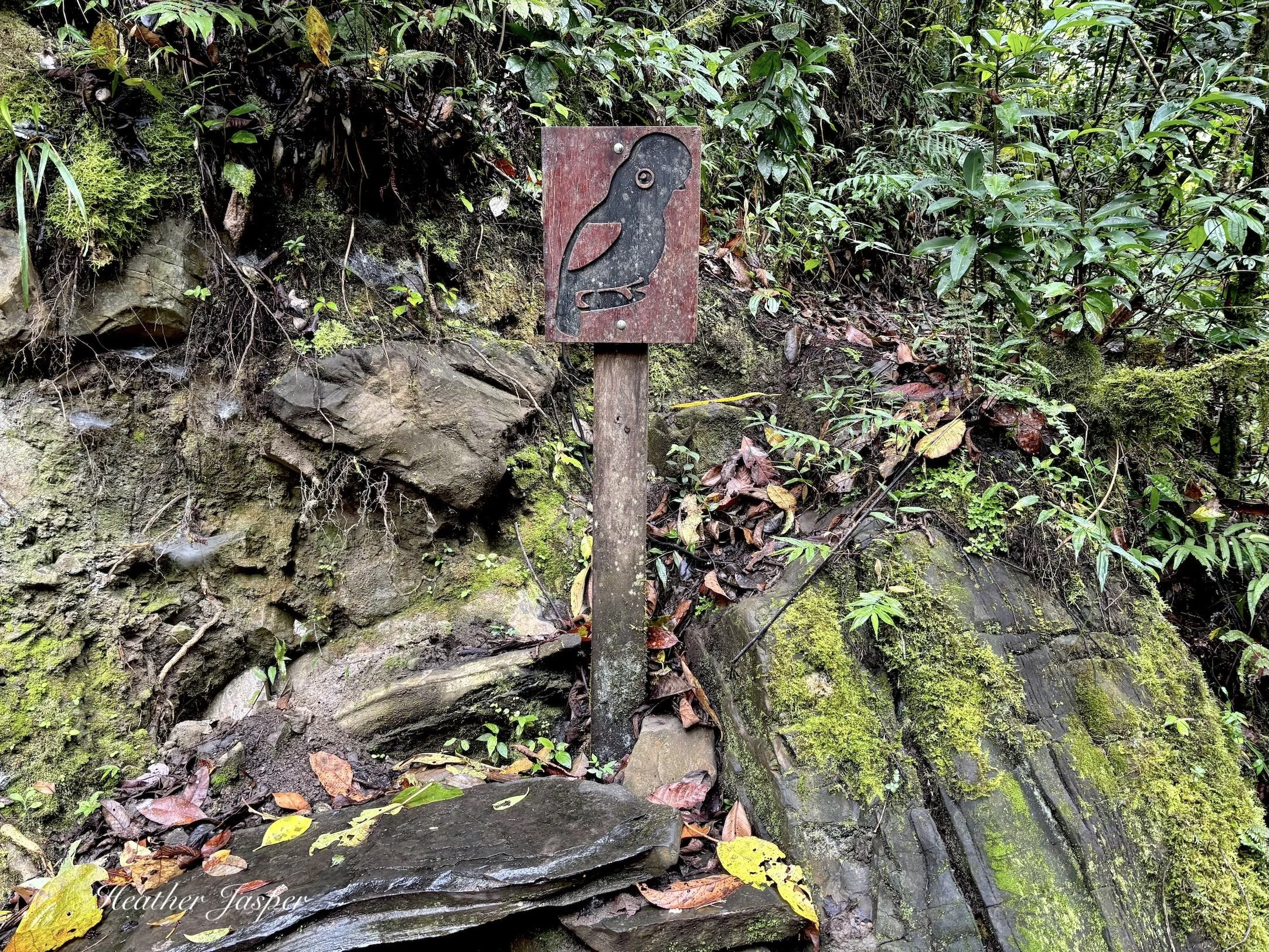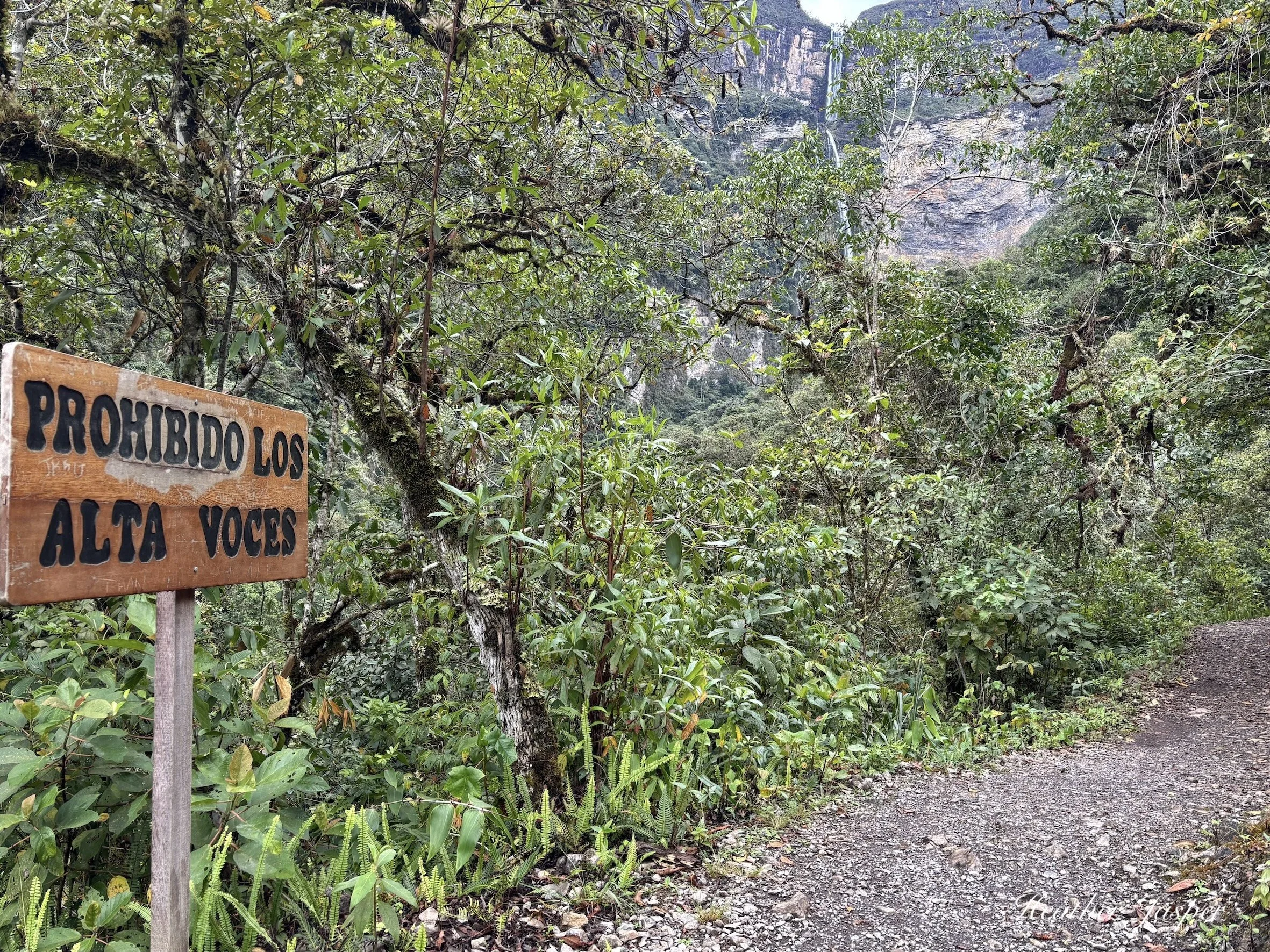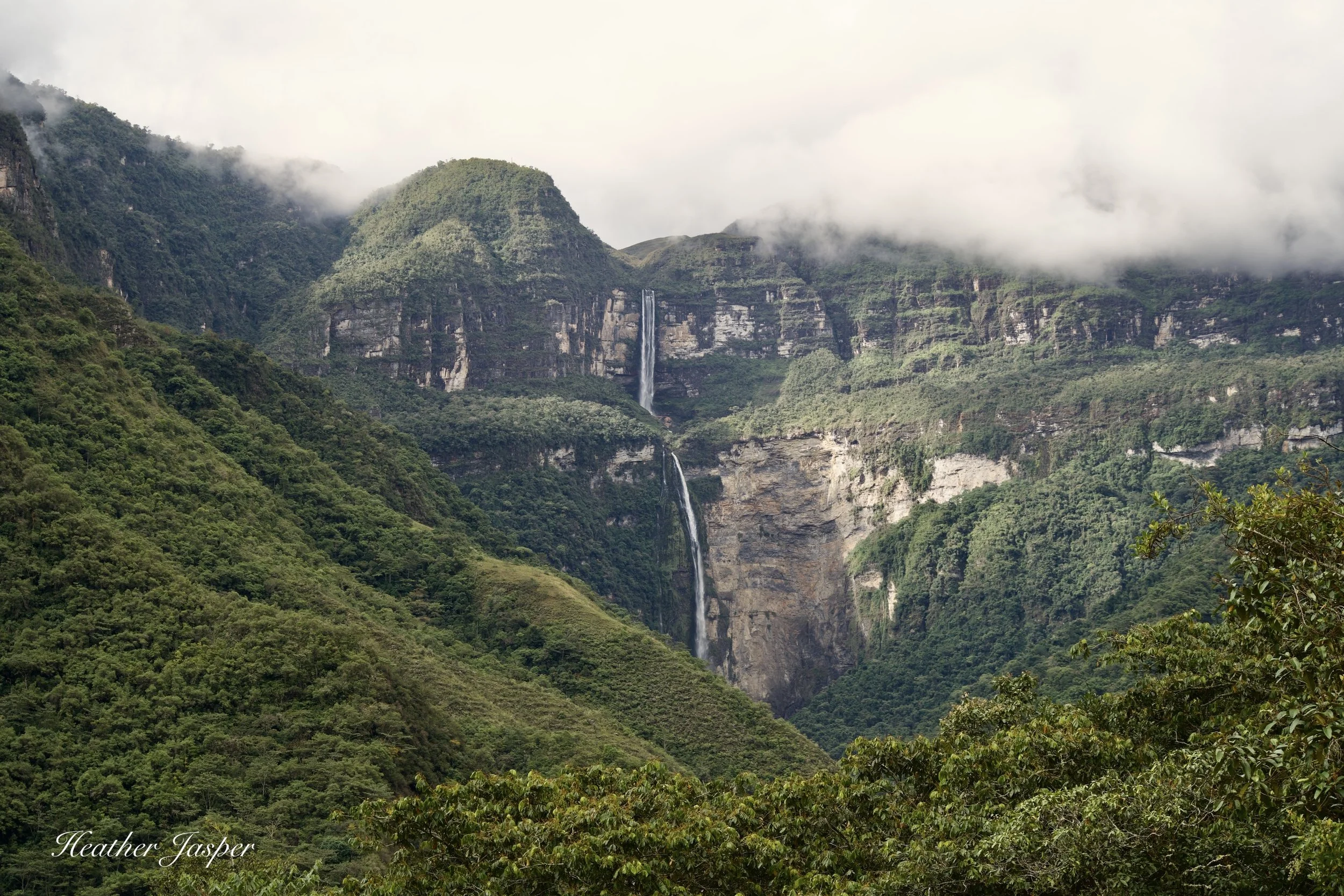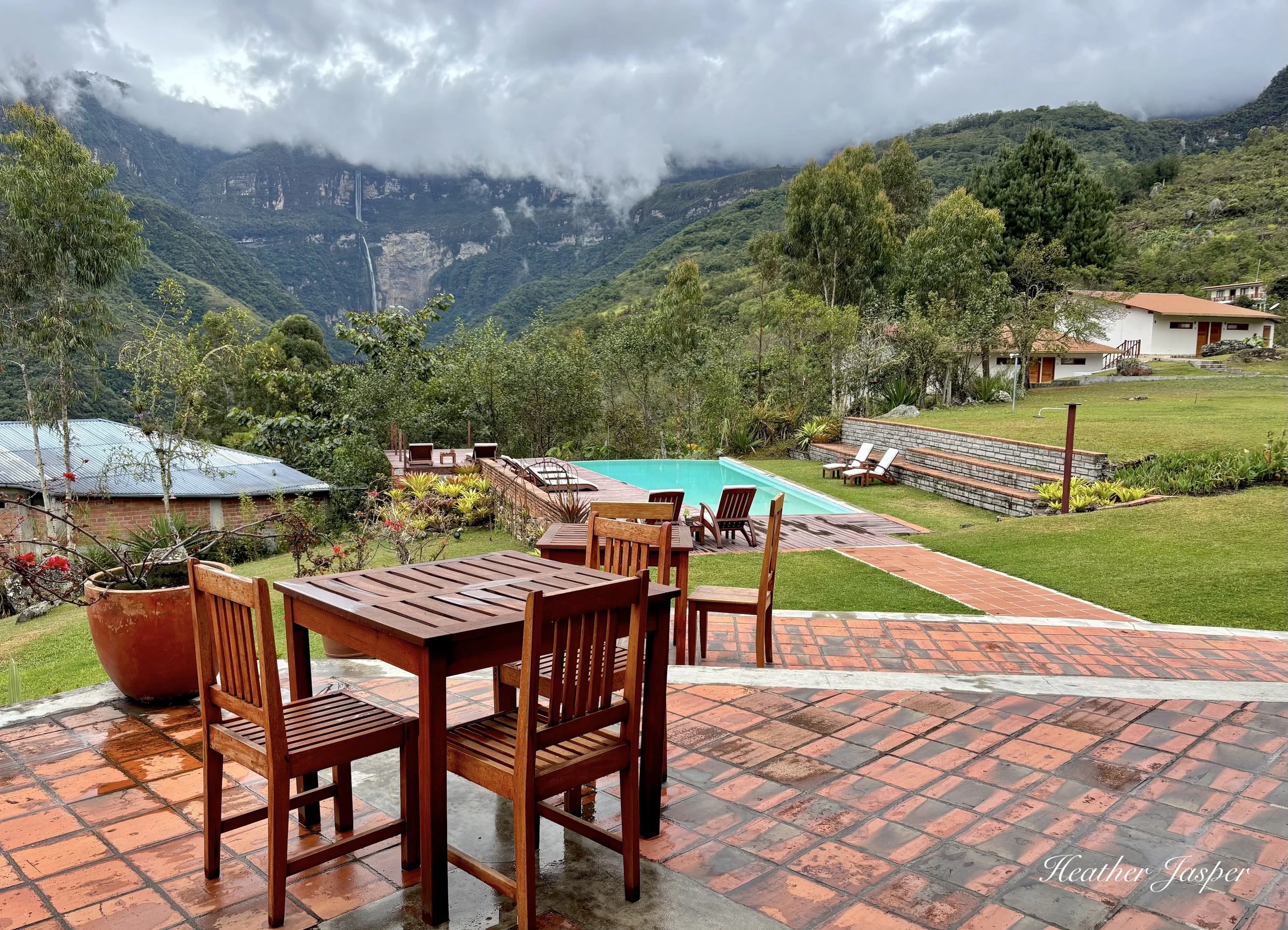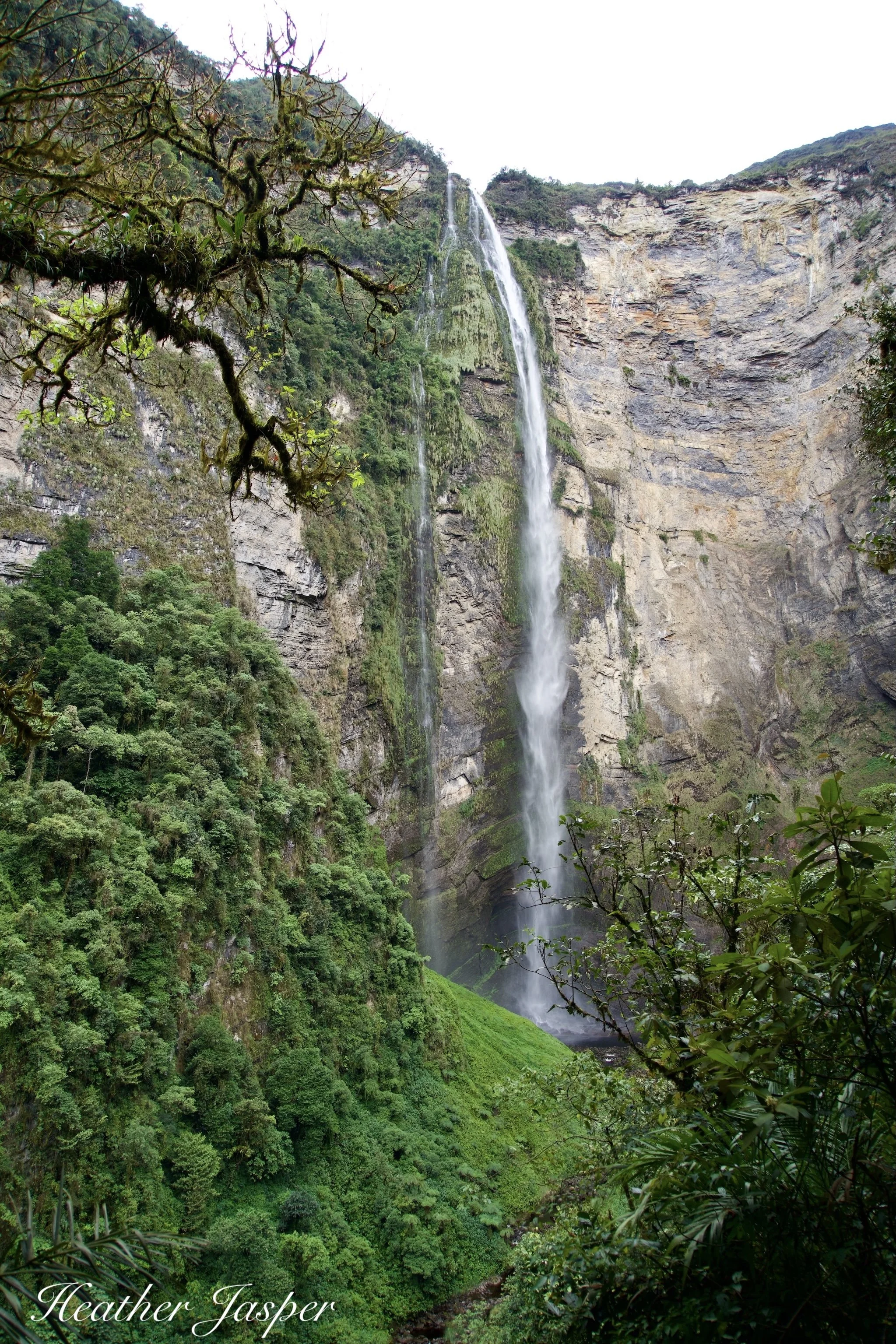Gocta Falls
Peru’s 3rd Tallest Waterfall
Counting both drops, Gocta Falls is 771 meters high (2,530 feet).
Why is Gocta Falls famous?
Gocta Falls is an impressive double waterfall. With a total height of 771 meters (2,530 feet) it’s the third tallest waterfall in Peru and in the top 20 tallest in the world.
Along the trail there are many viewpoints to stop and rest.
How to hike to Gocta Falls?
The hike starts in Cocachimba, then you follow the trail 5km to the falls. Along the way there are places to rest, watch birds and appreciate the orchids that are very common in this part of northern Peru’s cloud forests.
The tourist office is right in the middle of Cocachimba, on the only road. You can’t miss it.
How much does Gocta Falls cost?
You have to buy your ticket at the tourist office in Cocachimba. Tickets are s/30 soles (about $8.50) and a local guide (orientador) is s/60. You can also hire a horse to take you part of the way, the first 3km, for s/60.
The first few kilometers you pass by homes and farmed areas where the forest was cut.
How far is the hike to Gocta?
The hike from Cocachimba to Gocta Falls is 10km round trip (6.2 miles). If you hire a horse it will take you the first 3km, so you’ll only be walking 4km round trip (2.5 miles).
Selfie from a distance
When I was close to the falls it was too tall for any decent selfie, but along the trail there are lots of good photo op spots.
How difficult is the hike to Gocta Falls?
The trail is rated easy, because it’s not very far and there are no steep sections. However, there are also no flat sections. Every meter of this trail is either up or down. If you have good hiking shoes and are relatively fit, it’s an easy hike. If you have knee problems or shoes unfit for walking, it will be torture. Get a horse for the first (and last) 3km.
The trail is very well maintained, which is why I think it’s absolutely worth paying s/30.
What is the trail like to Gocta Falls?
The trail is well-maintained and somebody sweeps off the paved sections every morning. Most of the trail is gravel and dirt. On steeper sections there are uneven stone steps. Areas that are perpetually muddy have been paved with uneven cement set with stones like the section above.
The first kilometer or two are dirt and stone steps, with frequent signs.
You would have to try very hard to get lost. There are a few places close to the town of Cocachimba, during the first kilometer or so, where there are other trails that branch off the main trail. At every one of those branches there is a sign that says Camino a Gocta, with an unambiguous arrow.
Be prepared to get wet when you walk to the base of Gocta Waterfall.
Do you need a guide for Gocta Falls?
If you only want to walk to the falls and back, no, you don’t need a guide. If you want to learn about local culture, flora and fauna, then yes, get a guide. The guides you can hire at the tourist office in Cocachimba are called “orientador,” which means that they’re not licensed guides, just local people who know the place well and have some basic training. They only speak Spanish, but most know the local flora and fauna well. Chatting with one on the trail, he told me the best places to see the Gallito de las Rocas. If you are on a birdwatching trip and want a real bird guide, contact Ikam Expeditions.
There is a shelter you can wait out of the rain and use the bathrooms, marked SSHH for servicios higiénicos.
How far can a horse take you on the trail to Gocta?
After 3km you come to the Caballariza, where you’ll have to get off the horse. The person will wait there with the horse until you come back. There are bathrooms and nearby are some houses where people sell drinks and snacks. You’ll walk the last 2km to the falls, meaning that you only walk 4km total (about 2.5 miles).
Of the snack bars along the trail, this one has the best view.
What do you need to take on a hike to Gocta?
The most important thing is good hiking shoes or boots. Also, be prepared for rain any time of year, because this is the cloud forest. Take water and snacks, though there are several places along the way where local people sell drinks and snacks. Take toilet paper because the few toilets along the trail don’t have any. Take a camera because the falls are beautiful and take binoculars if you like birds.
These are the most common birds you’ll see. You’ll definitely hear parrots, even if you don’t see them.
What birds can you see on the trail to Gocta?
There are well over a hundred species but the one I really wanted to see, and didn’t see, was the Gallito de las Rocas. In English they call it Cock of the Rock, which sounds catchy because it rhymes but I would translate it as Little Rooster of the Rocks. Little rooster sounds cuter and it is a very cute bird. I’ve seen it in Manu and near Machu Picchu and was very disappointed to not see one at Gocta.
False Advertising
I went early in the morning and was the second person to sign in on the trail and I looked, but I didn’t see any Gallitos de las Rocas.
I heard or saw: Tropical Parula, Social Flycatcher, Tropical Kingbird, Slate-throated Redstart, Black-billed Peppershrike, Mitred Parakeet, Streaked Xenops, Gray-breasted Wood-wren, Smoke-colored Pewee, Bat Falcon, Mottle-cheeked Tyrannulet, Sparkling Violetear hummingbird, Rufous-collared Sparrow, Southern House Wren, Common Chlorospingus, Pale-edged Flycatcher, Cinnamon Flycatcher, Three-striped Warbler, Brown-capped Vireo, Paradise Tanager, White-breasted Wood-wren, White-crested Elaenia, Masked Flowerpiercer, Lesser Violetear hummingbird, Black-bellied Plover and Russet-crowned Warbler.
Good news for birders!
Portable speakers are prohibited along the trail, so you should be able to listen to the birds without music blaring in the background.
If you stay in Cocachimba, you can get this view from Gocta Lab.
What is the closest city to Gocta?
Cocachimba is the closest village but Chachapoyas is the closest city. It’s the capital of the Amazonas department, which is not lowland rainforest but mountainous cloud forest. The Peruvian department of Loreto is where tributaries come together to form the Amazon River.
Another great place to stay in Cocachimba is Gocta Lodge.
What is the closest airport to Gocta?
The closest city with an airport is Chachapoyas. There is one flight daily from Lima on Atsa airlines, which flies only to small airports in Peru. The Chachapoyas airport will close, and that one flight will be canceled, if the airport is too foggy. That happens often in the rainy season November to March because Chachapoyas is in the cloud forest. From May to September the flights are very rarely canceled but from December to February you have about a 50/50 chance that the flight will be canceled. Sometimes the airport is closed for days at a time.

